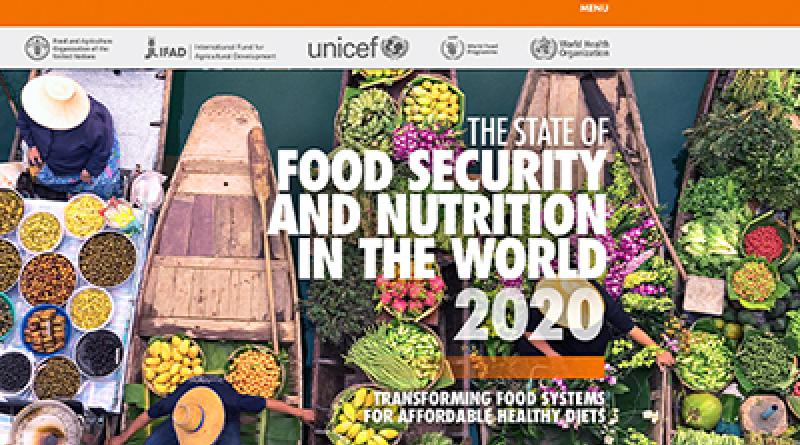The State of Food Security and Nutrition in the World 2020.

We are facing a global fight to address one of the biggest challenges of our time. Five years after committing to eradicate hunger we are not on track to reach our goals by 2030.
Chronic hunger is up by 10 million people in one year and up by nearly 60 million in five years. Almost 690 million people went hungry in 2019, with numbers highest in Asia [381 million] and rising fastest in Africa [250 million]. If these trends continue, more than 840 million people will be hungry by 2030, with Africa overtaking Asia as the region affected most.
The COVID-19 pandemic could add over 100 million people to this distressing toll. Overcoming hunger is just one part of the problem. Two billion people do not have regular access to safe, nutritious and sufficient food. In 2019, 144 million children [21.3%] under the age of five were stunted, while 47 million [6.9%] were affected by wasting. We are not on track to meet our 2030 targets for child stunting, low birthweight and exclusive breastfeeding.
Countries are also facing the growing burden of obesity linked to poor quality diets, with 676 million of adults [13.1%] obese. Around the world, many people are suffering from hunger, food insecurity and malnutrition because they cannot afford healthy diets.
Even the cheapest healthy diets are out of reach for more than 3 billion people in the world. In sub-Saharan Africa and Southern Asia, around 57% of the population cannot afford nutritious food.
Our current dietary patterns are also taking a heavy toll in terms of health costs and the environment.
By 2030, diet-related health costs linked to mortality and non-communicable diseases could be more than 1.3 trillion US dollars a year.
While diet-related costs of greenhouse gas emissions could be more than 1.7 trillion US dollars a year. As the world fights COVID-19, we cannot allow the pandemic to stop the global fight on hunger and malnutrition. To achieve a world free from hunger and malnutrition by 2030, countries must transform food systems and increase the affordability of healthy diets.
Shifting to healthy diets could reduce direct and indirect health costs by up to 97%, while reducing the social costs of greenhouse gas emissions by up to 74%.
We must ensure the cost of nutritious foods comes down. If the whole world shifts towards a healthy diet, we have a real chance at ending hunger and malnutrition, once and for all. We must act now, to build back better and make a difference in lives and communities everywhere.
Food and Agriculture Organization of the United Nations





